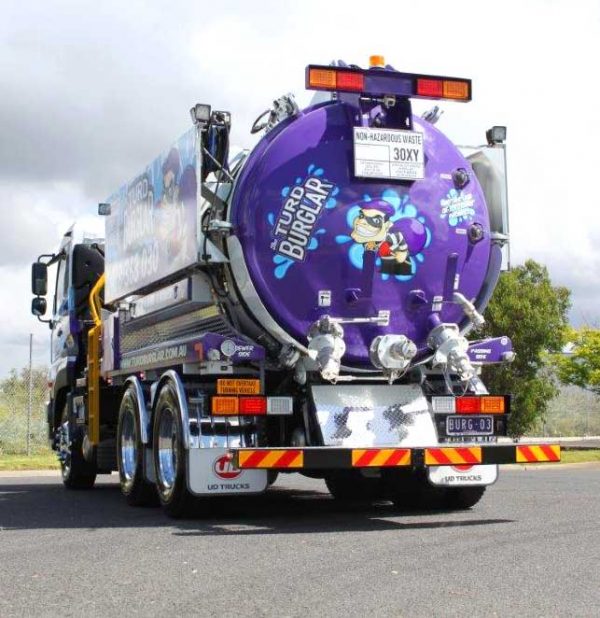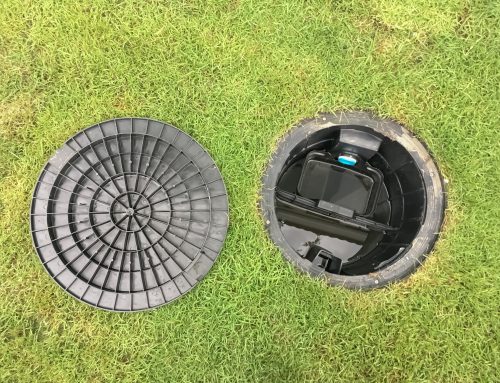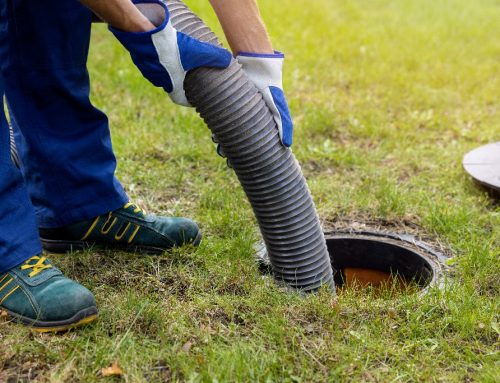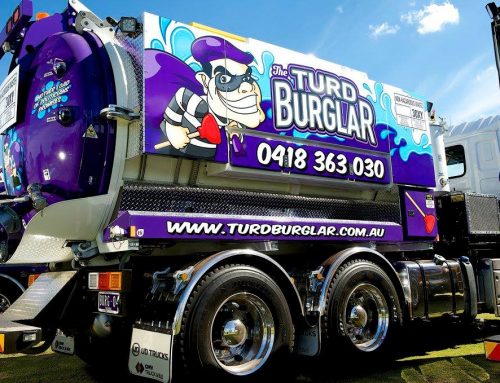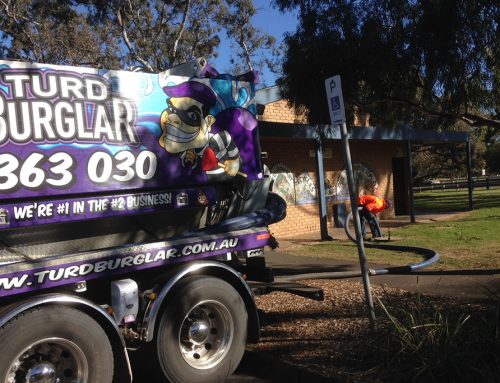A grease trap is a place where the grease, oil and food that shouldn’t be going down the sink are stopped from getting into the wastewater system. It builds up to a point where the trap is full and needs to be cleaned. Here’s everything you need to know about how they work and how to clean them.
The grease trap journey
The grease trap container catches wastewater that travels through the sinks. As the wastewater passes through the sinks and cools, the fats, oils and grease harden. At this stage, the wastewater is then pushed through the crossover pipe while the greases and solid foods remain in the container.
The crossover pipe filters the wastewater a second time to really ensure that as much of the solids from the water are removed. Once the wastewater is filtered through the crossover pipe, it then moves through to the outgoing line.
The outgoing line removes filtered water into the sewer system. It works so that the grease trap maintains its liquid level. A proper liquid level is pivotal in ensuring the grease trap continues to do its job: separate grease, oil and food.
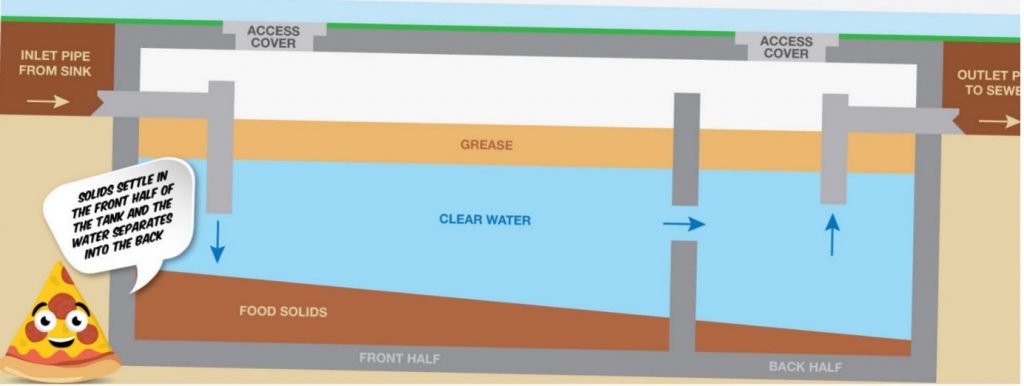
When to clean it
Regular maintenance should be scheduled for grease trap cleaning to ensure they remain functioning at their optimal level and to prevent blockages. Depending on the size of your business, we suggest servicing your grease trap two to six times a year. When you don’t regularly clean your grease trap, it can lead to offensive smells, water drainage issues and blocked pipes. But even before maintenance takes place, if you notice the following signs, it might be a good time to give your grease trap some attention: You must comply with your Trade Waste Agreement which is given to you by your local water authority – if you fail to comply then you risk large fines
- Smell
If you notice foul smells in your kitchen, the grease trap could be the culprit and it might be a sign that the grease trap needs cleaning.
- Slow Drainage
When your drains and sinks start to run slowly, it means that there could be a grease build-up in your drainage system. Fats and oils that go down the sink solidify and the drain will start to run slowly. For the initial cleaning, you can regularly flush your drains with hot water, but it’s not a long-term solution.
- Gurgling/Noisy Drains
If you hear a bubbling or gurgling noise as you empty your sink, it could mean that there’s a blockage due to grease and fats stuck in the pipes. You may consider cleaning it yourself but it’s not an easy process as it is dirty and greasy.
Before
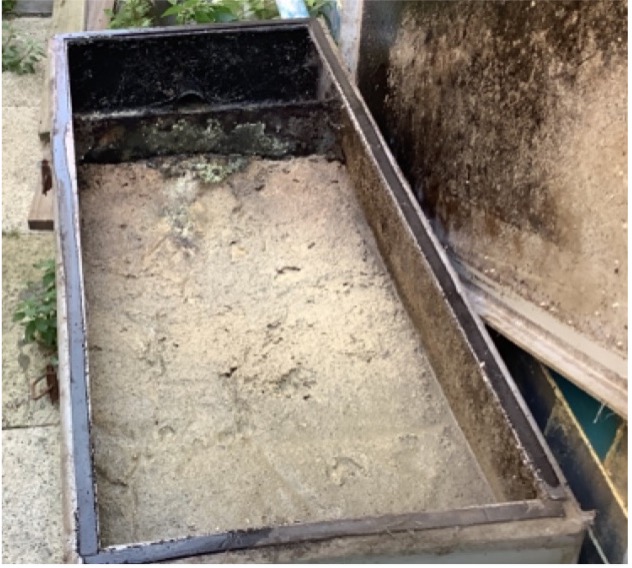
After
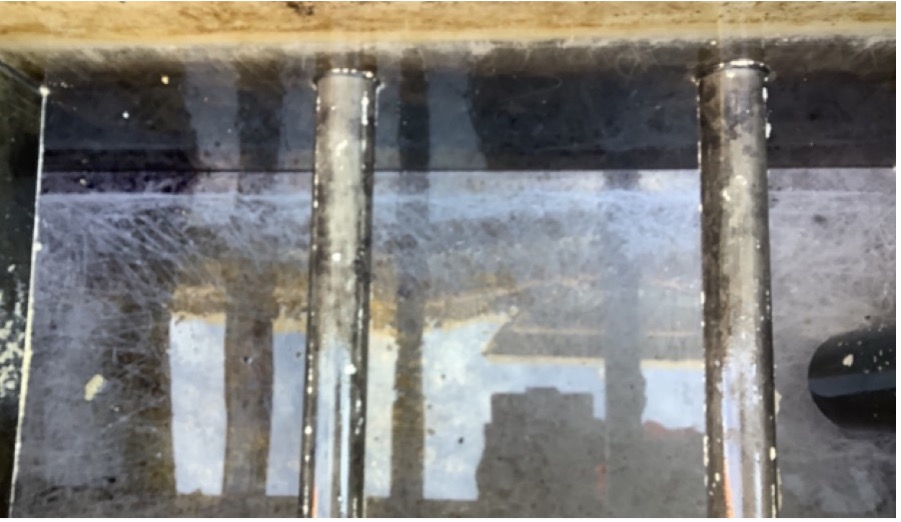
Grease trap maintenance
We can help with the cleaning and maintenance of your grease traps. We have the latest technology in grease trap cleaning which means we can get access without needing to run large hoses through your premises. We are also an EPA-accredited agent, where we can clean and submit the required paperwork on your behalf. All of the waste is disposed of at Re-Waste which is an EPA accredited disposal site, they recycle the waste and turn it into energy, so we are doing our bit to help the environment.
We also have a database for reminders when grease traps are due to be cleaned regularly. We will remind you.
Looking for a reliable grease trap maintenance team?
The Turd Burglar has 50 years of experience providing reliable grease trap cleaning, septic tank services, and other vacuum truck services. We are here to help you any day of the week or any time of the night.
For enquiries or more information on how we can help you out, contact us here or call 0418 363 030.


